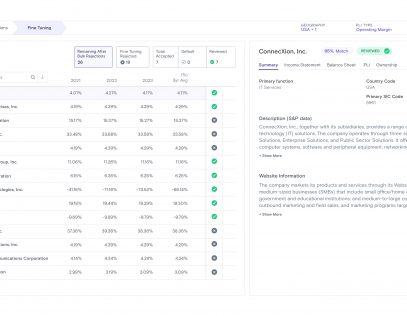For better or worse, the tax department does not own the chart of accounts (COA). And from a provision perspective, that’s a problem. Why? Allow me to climb up on my soapbox. Most companies do not maintain a COA that differentiates transactions in a manner that allows automation. For us tax people that makes it extremely hard to track detailed provision line items and intercompany tax amounts for transfer pricing purposes and that in turn makes it impossible to fully strategize.
While it would be easy to point the finger at other in-house executives—we’re looking at you, finance—it wouldn’t really be fair. If finance professionals build the necessary detailed COAs, the attest firm, accuses them of making COAs “too fat.”
It’s an insensitive accusation if you ask me, but I get where they’re coming from. Sort of. In theory, the idea sounds practical—fewer accounts means less auditing, which means less audit fees, but the consolidation of information within the COA comes at the expense of clarity for the provision process and tax intelligence where related-party transactions are concerned.
Perhaps companies let their COAs get extremely large, with no controls in place to ensure all accounts were necessary, and maybe that made them vulnerable to audits and questions. So, eventually they liked the idea of something skinnier, more agile, more modern. As a result, the COA was reduced to an unhealthy, waif-like status, that ended up creating more manual work for tax professionals, like myself, to differentiate the data to ensure accuracy of the income tax provision, and also, to understand the impact of intercompany transactions on a company’s tax position. And, of course, results were due on a compressed reporting schedule.
And as more companies expand globally, intercompany transactions need to be monitored not only for tax reporting in the U.S. (forms such as the 5471 / 5471 and Schedule M), but on a country-by-country basis. We learn to pivot and sort data, but can you imagine delivering a voluminous CBCR package based solely on an amazingly, detailed tax sensitive COA?
The good news is that regardless of COA limitations, there have been numerous innovations that now allow tax departments to manipulate data and produce faster, more accurate results, with the right level of controls, so your processes wouldn’t suffer significant deficiency. The bad news, however, is that the tax department does not control the COA, and many still have limited input on the creation and definition of new accounts or subaccounts to help facilitate tax processes.
Ultimately, both tax and financial reporting have skin in the game to develop a streamlined, effective, and efficient process for an expedited error-resistant closing process. And while the tax department may not own the COA, it still stands to benefit all interested parties from a little consideration when constructing one.









